|
Booking a hotel in Taiwan can be difficult and frustrating, especially if you are unfamiliar with the landscape and do not have any previous booking experience. In this blog we will give you a basic overview of the hotel atmosphere in Taiwan as well as provide you with some basic tips to find the best hotel for you.
Disclaimer: The following FAQ is only based on our opinion after years of booking accommodation in Taiwan, and should not be considered absolute fact. ion. What are the basic accommodations of hotels/hostels in Taiwan? For a private room:
Water is also hit and miss. Some cheap hotels or hostels will have a water machine or cooler in the hallway but no water bottles in the room. Some will only provide a hot water boiler and cups. Don't drink from the tap, the water you drink in Taiwan should be filtered, boiled, or bottled. Also, beware of shared bathrooms. Make sure your room says you have a private bathroom if this is important to you. Be careful when booking with AirBnb! I have stayed in some very nice Airbnb’s, but the quality with AirBnb in Taiwan is very hit and miss, as many of them (especially the cheap ones) have no standards at all. In general, you will be ensured a quality experience from booking a normal hotel or well-staffed hostel instead. What is the best website for hotel booking in Taiwan? My own personal preference is Agoda. However, Kayak is also a great platform to find the cheapest hotel across multiple sites. From my own experience, Agoda is the cheapest, provide the best quality listings, and have incredible customer service. They have given me my money back for a hostel on multiple occasions (which did not have free cancellation) just because there was an earthquake or because someone in my family got sick. Also, they once gave my money back on a room that had a shared bathroom because it wasn’t obvious from the listing. Overall in my opinion they have the best service and the best quality for the money. Usually they even have cheaper listings than other sites and offer greater discounts than other websites. What are the best websites for hotel booking in Taiwan? Ranked in order: 1. Agoda Website: https://www.agoda.com/ Relatively cheap: Yes Comparative number of listings: A lot of listings in Taiwan Quality of rooms: Excellent Service: Excellent From my own experience, Agoda is the cheapest, provide the best quality listings, and have incredible customer service. They have given me my money back for a hostel on multiple occasions (which did not have free cancellation) just because there was an earthquake or because someone in my family got sick. Also, they once gave my money back on a room that had a shared bathroom because it wasn’t obvious from the listing. Overall in my opinion they have the best service and the best quality for the money. 2. Kayak Website: https://www.kayak.com Relatively cheap: Yes Comparative number of listings: The most listings in Taiwan, because it combines and compares listings from multiple websites Quality of rooms: Excellent Service: Excellent Also a great platform to find the cheapest hotel across multiple sites. Why not compare all the sites at once? If you are looking for the absolute most cost effective hotels, this is the place to go. 3. Hotels.com Website: https://hotels.com/ Relatively cheap: No, but if you book ten rooms you get a free night. Comparative number of listings: Not the most listings in Taiwan, but there is a decent amount even in remote areas. Quality of rooms: Excellent Service: Excellent Hotels.com offers some different options other than Booking and Agoda. Also, if you book ten rooms with them, they give you one night free. However I have noticed that there are not as many rooms available in some areas, and the price is a bit more expensive than Agoda or Booking. 4. Booking.com Website: https://www.booking.com/ Relatively cheap: Yes Comparative number of listings: A lot of listings in Taiwan Quality of rooms: Excellent Service: Excellent This platform is pretty much the same as Agoda. They are owned by the same company and the listings overlap. 5. Klook Website: https://klook.com/ Relatively cheap: No, but you can sometimes combine rooms with transportation, tours, and activities. Comparative number of listings: Not the most listings in Taiwan, but there is a decent amount even in remote areas. Quality of rooms: Excellent Service: Excellent Klook offers many hotel options in Taiwan as well as the most tours activities, tours, and tickets. The number of hotel listings is not very high though, and often more expensive than other sites. 6. KKday Website: https://www.kkday.com/ Relatively cheap: No, but you can sometimes combine rooms with transportation, tours, and activities. Comparative number of listings: Not the most listings in Taiwan, but there is a decent amount even in remote areas. Quality of rooms: Excellent Service: Excellent KKday offers many hotel options in Taiwan as well as tours activities, tours, and tickets. The number of hotel listings is not very high though, and often more expensive than other sites. 7. Expedia Website: https://expedia.com/ Relatively cheap: No Comparative number of listings: Not the most listings in Taiwan, but there is a decent amount even in remote areas. Quality of rooms: Excellent Service: Excellent This platform is pretty much the same as Hotels.com. They are owned by the same company and the listings overlap. 8. Trip.com Website: https://www.trip.com/ Relatively cheap: No Comparative number of listings: Not the most listings in Taiwan, but there is a decent amount even in remote areas. Quality of rooms: Excellent Service: Excellent A decent platform with lots of listings, but does not offer as many options as Hotels.com or Agoda. 9. Trivago Website: https://www.trivago.com/ Relatively cheap: No Comparative number of listings: Not the most listings in Taiwan, but there is a decent amount even in remote areas. Quality of rooms: Excellent Service: Excellent A decent platform with lots of listings, but does not offer as many options as Hotels.com or Agoda. 10. AirBnb Website: https://www.airbnb.com/ Relatively cheap: Yes Comparative number of listings: There are a lot of listings, and it may be the only option in some remote areas and outer islands. Quality of rooms: It depends, some are really bad while others are good. There is no quality guarantee. Service: It really depends on the landlord in charge. I do not recommend AirBnb. The App works and there are many listings that are cheap. However sometimes the cleaning and booking fees can be ridiculous, and if you are bringing multiple people there can be unreasonable charges. Be careful when booking with AirBnb! I have stayed in some very nice Airbnb’s, but the quality with AirBnb in Taiwan is very hit and miss, as many of them (especially the cheap ones) have no standards at all. I’m speaking from experience here; some of the cheap house rentals I have gone to have been a terrible experience. Cockroaches, spiders, mosquitos, no water to drink, unwashed bedding, the list goes on and on. However, some have been nice. But you never know. In general, you will be ensured a quality experience from booking a normal hotel instead. What are your recommendations for hotels in Taiwan? Our recommendations for hotels in Taiwan (that we have stayed at personally) are as follows: Taipei 台北: Central Taipei: We have stayed at and recommend the Yuanshan Grand Hotel, once the tallest building in Taiwan and still the most grand (book on Booking.com here, Tripadvisor here, or Agoda here). We have stayed at and also recommend Fu Chang Hotel in Ximending, which is within walking distance of Ximending shopping district (book on Booking.com here, Tripadvisor here, or Agoda here). The Northern Coast: We recommend Fullon Hotel which has locations in Tamsui and Fulong near the beach (book on Booking.com here, Tripadvisor here, Agoda here, or Hotels.com here). We have stayed at and recommend Gold Mountain Ranch, which is a horse ranch and glamping destination in Jinshan. You can book a night at Gold Mountain Ranch on Klook here. You can also check out our full blog on the ranch here. We have also stayed at and recommend Hai Xia Your Home which is right in front of Fulong Beach (book on Booking.com here, Tripadvisor here, Agoda here, or Hotels.com here). Looking for a hotel? We recommend booking through Booking.com here, which provides the best quality selection of accommodation in Taiwan. Wulai: There are many hot spring hotels in Wulai that have a hot spring tub right in the room. We have stayed at and recommend Wulai SungLyu Hot Spring Resort, which is a hot spring resort with great views just above Wulai Old Street. You can book on Booking.com here, Agoda here, Hotels.com here, TripAdvisor here, Trip.com here, Klook here, Kayak here, or Expedia here. Looking for a hotel? We recommend booking through Booking.com here, which provides the best quality selection of accommodation in Taiwan. Find out where to stay in our Taiwan hotels guide or search for the best hotel deals in Taiwan here. Yilan 宜蘭: We have stayed at and recommend Ying Shih Guest House, a resort in Datong Township near Taipingshan and Fan Fan Hot Spring (you can book on Agoda here or Booking.com here), and Jiaosi Hotspring Hotel, a hotel with hot springs in each room (you can book on Agoda here, Booking.com here, Hotels.com here, Expedia here, or Trip.com here). We have also stayed at Toucheng Leisure Farm, a recreational farm and experience center in Toucheng (you can book on Agoda here, Booking.com here, Hotels.com here, Expedia here, on Klook here, or on Trip.com here). Hualien 花蓮: The best hostel I’ve ever stayed at is “When Happiness Knock Your Door” “幸福來敲門” in Hualien. The hostess will go out of her way to make you comfortable and her rooms are kept extremely nice. Also it was one of the few hostels I’ve ever been to that has an elevator. Her price is well below the quality you will enjoy. She has almost a perfect rating on Booking.com and Agoda. You can book When Happiness Knock Your Door on Agoda here, Booking.com here, Hotels.com here, Expedia here, Kayak here, TripAdvisor here, or Klook here. We have also stayed at and recommend Dream Taiwan Homestay (Agoda / Booking.com / Expedia / Hotels.com), a high quality hostel for the money in downtown Hualien, Farglory Hotel (Agoda / Booking.com / Expedia / Hotels.com), right next to Farglory Ocean Park with amazing views of Hualien, and Goldenflower B&B (Agoda / Booking.com) in Yuli right next to Sixty Stone Mountain. Taitung 台東: We have stayed at and recommend the Papago International Resort in Chishang (you can book on Agoda here, Booking.com here, Hotels.com here, or Expedia here), which is a five star hotel with private villas with pools for each room, and Mountain and Ocean B & B in Taimali (you can book on Agoda here, Booking.com here, Hotels.com here, or Expedia here), which is a quiet and affordable B&B right next to the beach. Kenting 墾丁: I have stayed at many hostels and hotels in Kenting, and even almost bought a house here. Some places that I have stayed at and can recommend are Nanwan Kiki (book on Agoda here, Booking.com here), a B&B next to Nanwan Bay, Kenting's most popular Beach. There are also a few decent hotels near Kenting Street Night Market like Kenting Star Inn 888 (book on Agoda here, Klook here, Hotels.com here, Expedia here, or Booking.com here), or Kenting Dajianshan Hotel (book on Agoda here, Booking.com here, Hotels.com here, or Expedia here). You will notice that none of these hotels are five star resorts (I do not come to Kenting to waste my time at a resort, but you can still search Agoda, Booking.com, Hotels.com, or Expedia for those) but they are in my opinion the above have the best value for the money. Kaohsiung 高雄: We have stayed at and recommend Chao She Hotel (you can book on Agoda here, Booking.com here, Hotels.com here, or Expedia here) IHI Sanduo Travel Hotel (you can book on Agoda here, Booking.com here, Hotels.com here, or Expedia here), and Mingli Hotel (you can book on Agoda here, Klook here, or Hotels.com here) which are three inexpensive and high quality choices in downtown Kaohsiung. I also have stayed at and recommend Kaohsiung Meinong Rabbit Paul Homestay B&B (you can book on Agoda here, Booking.com here, or Trip.com here), a quiet B&B in rural Meinong, and Chengching Lakeside Resort (you can book on Agoda here, Booking.com or Trip.com here)and the Grand Hotel Kaohsiung (you can book on Agoda here, Booking.com here, Hotels.com here, or Expedia here) which both offer breakfast buffet and free entrance into Chenqing Lake Park. I have also stayed at the 85 sky tower which offers great views of the city; you can search for rooms in the 85 sky tower on Agoda here, Booking.com here, Hotels.com here, Expedia here, or Trip.com here). Tainan 臺南: We have stayed at and recommend Liho Hotel (you can book on Agoda here, Booking.com here, or Hotels.com here), a quality hotel right next to Chikan Tower, and Famouse Hotel (you can book on Agoda here or Klook here), which is another great hotel also within walking distance of Chikan Tower in old Tainan. Chiayi 嘉義 We have stayed at and recommend Chiayi Crown Hotel (you can book on Agoda here, Booking.com here, Hotels.com here, or Expedia here), Shin Kao Hotel (you can book on Agoda here or Trip.com here), and YesHotel (you can book on Agoda here, Booking.com here, Hotels.com here, or Expedia here), which are all quality hotels for a reasonable price near Chiayi Station. We also recommend Shianghu Botique Hotel (you can book on Agoda here, Booking.com here, Hotels.com here, or Expedia here), with excellent quality for the money just our of Chiayi City center. Finally we have stayed at and recommend Fenchihu Street Hotel (you can book on Agoda here, Booking.com here, Hotels.com here, or Expedia here), which is within walking distance of Fenqihu Old Street, Fenqihu Station, and many amazing hikes in the area. Nantou 南投 We have stayed at and recommend Jenq Yang Hotspring Hotel (you can book on Agoda here, Booking.com here, Trip.com here, or Klook here), a hot spring hotel near the mystical Lushan hot spring, and Maple Leaf Holiday Villa (you can book on Agoda here, Booking.com here, Hotels.com here, Expedia.com here, Trip.com here, or Klook here), a lodge with a great view and within walking distance of Cingjing Farm. I also have stayed at and recommend Kirin Villa (you can book on Agoda here or Booking.com here), a mountain resort in Puli near Sun Moon Lake. Looking for a hotel? Find out where to stay in our Taiwan hotels guide or search for the best hotel deals in Taiwan here. We recommend booking through Agoda here, which provides the best quality selection of accommodation on the islands. Miaoli 苗栗 We have stayed at and recommend Beautiful Landscape Resort, a fish farm and resort near Nanzhuang Old Street (you can book on Agoda here, Booking.com here, Hotels.com here, or Expedia here), and Yuan Motel, a high class car motel which includes a great breakfast buffet (you can book on Agoda here, Booking.com here, Hotels.com here, or Expedia here). We also recommend Flying Cow Ranch which includes cabins and camping right on the tourist ranch; you can book a room on Agoda here, Booking.com here, or Trip.com here. Hsinchu 新竹 We have stayed at and recommend the Golden Motel a high quality motel near Green Grass Lake (you can book on Agoda here, Booking.com here, Hotels.com here, Expedia here, or Trip.com here), and CD Motel, another high quality motel in downtown Hsinchu (you can book on Agoda here, Booking.com here, or Trip.com here). Unfortunately I cannot recommend any further hotels that I have stayed at in Hsinchu because usually we stay at my wife's uncle's house. You can find out where to stay in our Taiwan hotels guide or search for the best hotel deals in Taiwan here. Xiaoliuqiu Island 小琉球 Some places we have stayed at that I recommend are Yujing 6.8, which is a four story house near Dafu Harbor (you can book on Agoda here or Booking.com here), Boliu B&B (柏琉民宿) which is also a nice newly renovated hostel right on the main street near lots of restaurants (you can book on Agoda here or Booking.com here), Haichan Hostel which is a traditional three-sided Taiwanese mansion near the beach (you can book on Agoda here or Booking.com here), and Baisha Bay B&B which is a great place near the main harbor that is only one story so there are no stairs (you can book on Agoda here or Booking.com here). All of the owners of these places were very helpful, and even helped me to move my luggage and rent scooters. Some hostels require that you pay for my room in advance via bank wire transfer (this may not be an option if you are a foreign traveler, so make sure they accept credit cards if you do not have a Taiwan bank account), but you should not have to do this if you book through Agoda or another hotel booking site. Green Island 綠島 We stayed at and can recommend Fire Island Guesthouse, which is a high quality B&B on right on the east coast of the island. Penghu 澎湖 We have stayed at and recommend Han's Hostel, which had great service and is right next to Shanshui Beach, the best beach in Penghu. Matsu 馬祖 We have stayed at and recommend Fu Hwa Homestay on Nangan (you can book on Agoda here, Booking,com here, or Trip.com here), and B&B of Blueshine on Beigan (you can book on Agoda here, Booking,com here, or Trip.com here). Both places were excellent, and provided us a car ride to and from the airport for free. Kinmen 金門 We stayed at and can recommend Sihai Hostel, which is a quality hostel with spacious and clean rooms. They also arranged transport to and from the hostel for free. You can book Sihai Hostel on Agoda here, Klook here, or Trip.com here. What is the average price of a hotel in Taiwan? According to Hikersbay.com, the average price is 891 TWD (28 USD) for a hostel, 2,400 TWD for a 3 star hotel (74 USD), and 8,300 TWD (257 USD) per night for a luxury hotel. According to the Taipei Times, in 2023 the average daily rate of licensed tourist hotels in Taiwan was 4,618 TWD (145 USD). In our experience, a fair price for a hotel in Taiwan that I like to stick to is around 1,500 TWD (about 45 USD) for a standard double room. What is the average price range for a standard double hotel room in Taiwan? The following prices are from personal experience booking over tens of hotels in Taiwan over 5 years (Please note 1000 NT is roughly equal to 31 USD): Typically, the cheapest of the cheap hotels will go from 700-1000 NT Lower range Hotels will go from 1000-1700 NT Mid Range Hotels will go from 1500-2500 NT High Class Hotels will go from 2500-5000 NT Super Fancy Hotels will go from 5000-30,000+ NT per night! Please note these prices also vary by location.
0 Comments
Disclaimer: We are not affiliated with any camp ground or camping products in Taiwan. The following FAQ is only based on our opinion after years of camping in Taiwan, and should not be considered absolute fact. If in doubt, make sure you check with the local police station or other government office to make sure you are following local regulations while camping in Taiwan.
With two thirds of the island covered in mountains, Taiwan has some of the most beautiful scenery in the world. One of the best ways to experience the natural beauty of Taiwan is via camping. Below is a very basic level FAQ on camping in Taiwan for foreigners that have never experienced it.
How do I book a campsite in Taiwan? Please be sure to check out camping options in Taiwan on Klook here or KKday here.
Yangmingshan National Park is a mountainous area in Taipei and New Taipei, known for its volcanic activity, hiking trails, wildlife, waterfalls, hot springs, and sulfur vents. It is definitely worth a stop on your trip to Taipei.
Historical Background: The area known as Yangmingshan now was formed by volcanoes about 700,000 years ago, forming many mountains about 1000 meters or less in northwestern Taiwan. The park still features active volcanoes, vents, and hot springs. The original name of the area was Caoshan (grass mountain 草山). During the Qing Dynasty, the area was used to harvest sulfur, and many of the hills were burned to help catch sulfur thieves, Qingtiangang likely being one of these areas. Sulfur mining was started in the Qing Dynasty by a British mining company that first obtained the rights to mine here in 1897. In 1927 during the Japanese era, Yangmingshan was made as the first national park in Taiwan, then known as Datunshan National Park Association. The area around Qingtiangang to Lengshuikeng was made into a ranch for water buffalo, and grass from Japan was planted here for them to graze. In 1950 after the ROC took Taiwan, Chiang Kai-shek renamed the park after the philosopher Wang Yangming, and called the area Yangmingshan. The KMT kept the ranch at Qingtiangang and continued to maintain it. They also built bunkers here and kept a garrison of troops. In 1985, after resolving many land disputes, Yangmingshan National Park was officially designated as a national park in the ROC era. Due to its easy accessibility from Taipei and many natural attractions, it is one of the most popular tourist destinations in Taipei City. Most visitors come on weekends, and it has parking lots and visitor's centers throughout the park. Hours: The visitor's centers are open from 9 AM to 4:30 PM. However you can visit the park 24/7. Price: Free entrance into the park (car parking 30-50 NT, scooter parking 20 NT) You can book tours to Yangmingshan on TripAdvisor here, Klook here, or KKday here or here. Tours: You can check out tours to Yangmingshan such as a One-day Yangmingshan NP Beitou Hot Spring Park and Tamsui Tour Package, Beitou and Yangmingshan Day Tour from Taipei, One Day Hike around Yangmingshan, or Private Yangmingshan Volcano Tour and more on TripAdvisor here, Klook here, or KKday here. When to Go: Silver Grass Season: Mang Grass season goes from September to November. During this time you will be able to see silvery grass all over the mountain tops around the park. Cherry Blossom Season: Cherry blossoms can be seen in the park from February to late March. Snowfall: Once every few years it can snow here from December to February. The snow usually only lasts a day or two and melts away quickly. Best Weather: In my opinion, the best weather is in the summer when constant rain makes the air cleaner, and summer mornings are usually clear. Be sure to start hiking in the morning for the best views and sunshine, as afternoon thundershowers are common. Hotels in Taipei: High end: We have stayed at and recommend the Yuanshan Grand Hotel, once the tallest building in Taiwan and still the most grand (book on Booking.com here, Tripadvisor here, or Agoda here). We have also stayed at and recommend the Grand Hyatt (book on Booking.com here, Tripadvisor here, Agoda here, or Hotels.com here), Marriot (book on Booking.com here, Tripadvisor here, Agoda here, or Hotels.com here), Sheraton (book on Booking.com here, Tripadvisor here, Agoda here, or Hotels.com here), Shangri-la (book on Booking.com here, Tripadvisor here, Agoda here, or Hotels.com here), and Regent (book on Booking.com here, Tripadvisor here, Agoda here, or Hotels.com here), which are all very high quality hotels in the middle of Taipei City. We also recommend Fullon Hotel which has locations in Tamsui and Fulong near the beach (book on Booking.com here, Tripadvisor here, Agoda here, or Hotels.com here). Budget Hotels: We have stayed at and also recommend Fu Chang Hotel in Ximending, which is within walking distance of Ximending shopping district (book on Booking.com here, Tripadvisor here, or Agoda here). We have also stayed at and recommend Hai Xia Your Home which is right in front of Fulong Beach (book on Booking.com here, Tripadvisor here, Agoda here, or Hotels.com here). Looking for a hotel? We recommend booking through Booking.com here, which provides the best quality selection of accommodation in Taiwan. Find out where to stay in our Taiwan hotels guide or search for the best hotel deals in Taiwan here. How to get there: By Car/Scooter: From Taipei, take provincial highway 2A north to the park, where you can see the main attractions such as Zhuzihu, Qixingshan, Datunshan, Qingtiangang, etc. There are many parking lots, but car parking is limited on weekends and the number of cars allowed up the mountain is also limited. There is also paid scooter parking. On weekends this place can be packed, and cars can be backed up for up to an hour or more, so consider taking a scooter or bus. Looking for scooter rental in Taipei? Check out Qeeq here, Klook here, or KKday here to search for options. You can also check out our scooter rental guide here. If you are looking for car rentals, you can also search Qeeq here, Klook here, or KKday here. You can also check out our car rental guide here. By Bus: From Beitou MRT Station, Take Little Bus 19 (小19), or another bus to the park. You can book tickets to travel to Taipei via inter-city bus on Klook here. You can book tickets to Taipei via high speed rail (HSR) on Klook here or KKDay here. By Bicycle: Cycling is the best way to enjoy Taiwan's landscapes if you have the time and energy. Looking for bicycle rentals in Taiwan? You can search on KKday here and search for tours on Klook here. You can also check out our Taiwan cycling guide here. Map: See below for a map of places mentioned in this blog:
Bishan Campground (aka Bishan Camping Area) in Neihu District of Taipei City is the only free campground run by Taipei City (although it has an extension campground in Beitou). Near the campground is Bishan Temple, which has one of the best views of Taipei. Besides camping and temple worship, the area is also a popular hiking spot, and there are multiple tourist farms and tea shops to explore.
How to apply for a camping spot: You can apply using this online form (it's in English!): http://gisweb.taipei.gov.tw/TPCamp/en/ABishan.aspx You must apply at least 7 days in advance, but no more than 30 days in advance. You must enter your passport ID or Taiwan ID. You can check the status of the application online as well. For more info, check here (Chinese): https://www.geo.gov.taipei/mp10504b/ Price: Free! Utilities:
Hours: Camping time starts at 2 PM and ends at 1 PM the next day. You can only stay for two nights at a time. Tours and Activities: You can book a ticket to the Neihu Strawberry Garden on KKday here. You can look for more activities on Klook here or KKday here. How to get there: By Bus: You can take a bus to about 1 KM away from the campsite, but then you have to walk with all of that gear. If that's not what you want then you should take a taxi or your own vehicle. You can also book a Taipei Sightseeing: Hop On, Hop Off Open Top Bus on TripAdvisor here. By Scooter/Car: From East Neihu, drive up Bishan Raod (碧山路) until you see the campground. It's hard to miss. Looking for scooter rental in Taipei? You can search on Klook here or KKday here to search for options. You can also check out our scooter rental guide here. If you are looking for car rentals, you can also search Qeeq here, Klook here, or KKday here. You can also check out our car rental guide here. By Bicycle: Cycling is the best way to enjoy Taiwan's landscapes if you have the time and energy. Looking for bicycle rentals in Taiwan? You can use Taiwan's many Youbike sharing stations, or search for rentals on KKday here, and search for tours on Klook here. You can also check out our Taiwan cycling guide here. You can also book a Sunset Riverside Bike Ride and Historical Tour, 4 Hour Cycling in Taipei, Ultimate 8-Hour Cycling City Tour, or Taipei City Bike Tour with Night Market Experience on TripAdvisor here. For more information, check out our Taiwan transportation guide here. Map: Please see below:
Mudan Old Street is a small old street in Mudan Neighborhood of Shuangxi District. The old street is almost totally a residential area. Now it is a quiet town with very little tourists, but with lots of nature sights, mountain roads, camp sites, and hiking trails nearby.
Background: Mudan is named after the tree peonie flower. During the Qing Dynasty, Mudan was an important stop along the Danlan Old Trail (淡蘭古道 which means the road between Tamsui and Yilan), which was split into three paths, and Mudan was on the Northern Path. The Northern Path winded from Mengjia Old Street to Nuannuan, then to Ruifang, and onto Jiufen and Houtong. From Houtong, the road then went to Mudan and then Shuangxi, then went along the coast to Yilan. During this time, most of the things traded were tea leaves and agricultural goods. Historically Mudan and the areas nearby have been rural, and in the 1900s relied on coal, gold, and mercury mining to drive the economy. The mining industry died down in the late 1900s and is now defunct. Currently the neighborhood of Mudan has a population of only 1953 people, and is dropping every year. The Mudan Train Station was recently upgraded to a simple station, with a TRA employee stationed there to sell tickets. There are about 200 people coming and leaving the station every day. Only the shuttle train stops at the station. Now it is a quiet town with very little tourists, but with lots of nature sights, mountain roads, and hiking trails nearby. Hours: About 10 AM to 6 PM. Price: Free Tours and Activities Around Mudan: Don't forget that there are many activities available around Ruifang such as Rock Climbing, Hiking, kayaking, canoeing, snorkeling, SUP / paddle boarding, water biking, Diving, River Tracing / Canyoneering, ATVing, Horse Riding, Cooking Class, photo shoot, Jingtong Sky Lantern Police Station, Shifen Sky Lantern Experience, Waterfall Zipline, Waterfall Diving, and more on Tripadvisor here, Klook here, or KKday here. Hotels in Taipei: We have stayed at and recommend the Yuanshan Grand Hotel, once the tallest building in Taiwan and still the most grand (book on Booking.com here, Tripadvisor here, or Agoda here). We have stayed at and also recommend Fu Chang Hotel in Ximending, which is within walking distance of Ximending shopping district (book on Booking.com here, Tripadvisor here, or Agoda here). Looking for a hotel? We recommend booking through Booking.com here, which provides the best quality selection of accommodation in Taiwan. Find out where to stay in our Taiwan hotels guide or search for the best hotel deals in Taiwan here. How to get there: By Train: Take the TRA to Mudan Station. Only the shuttle train stops at the station. Book tickets via the normal train (TRA) on Klook here. By Car/Scooter: From Taipei, on provincial highway 5 until you reach Keelung, then take provincial highway 2B to Shuangxi. You then need to take county raod 102 to Mudan. The old street is only one lane, so you can get stuck if driving a car. Looking for scooter rental in Taipei? You can search on Klook here or KKday here to search for options. You can also check out our scooter rental guide here. If you are looking for car rentals, you can also search Qeeq here, Klook here, or KKday here. You can also check out our car rental guide here. By Bicycle: Cycling is the best way to enjoy Taiwan's landscapes if you have the time and energy. Looking for bicycle rentals in Taiwan? You can use Taiwan's many Youbike sharing stations, or search for rentals on KKday here, and search for tours on Klook here. You can also check out our Taiwan cycling guide here. You can also book a Sunset Riverside Bike Ride and Historical Tour, 4 Hour Cycling in Taipei, Ultimate 8-Hour Cycling City Tour, or Taipei City Bike Tour with Night Market Experience on TripAdvisor here. For more information, check out our Taiwan transportation guide here. Map: Please see below:
Pingxi District of New Taipei has some of the most popular attractions in Northern Taiwan. With a total of 7 stations along the Pingxi Railway Line (plus 2 if you count Ruifang and Houtong), there are endless places to explore, eat, hike, and enjoy Taiwan's history, culture, and natural beauty all in one place.
Background: Before the Pingxi Railway was built, during the Qing Dynasty a section of the Danlan Old Trail ran through roughly the same area, connecting Yilan to Tamsui. The Japanese completed the Pingxi Railway in 1921 in order to transport coal from the area. Most all of the stations and villages along the line were economically reliant on the coal industry until its downfall in the late 1990s. The coal industry remained strong after the ROC took over Taiwan after WWII, but slowly waned in the 1980s and 1990s due to the decrease in global coal prices. In the year 2000, Sanxia’s Lifeng Mine shut down operations, and Taiwan’s mining company closed, and thus all coal mining in Taiwan effectively stopped. The Pingxi Railway is a single track that is 12.9 KM long with 7 stations. Recently the government has offered many plans to connect the Pingxi Railway to the Taipei MRT via Jingtong to Jingmei, however due to many factors these plans have never been approved. The area around Pingxi and Ruifang is made up of sedimentary rock which easily erodes, creating many large waterfalls such as Shifen Falls, and pointy jagged peaks like the Pingxi Crags. Popular activities along the Pingxi Railway include hiking, river tracing, eating at one of the many old streets, setting off sky lanterns, and exploring the many historical coal mining sites. Hours: The first train reaches Sandiaoling daily at 5:25 AM and the last train leaves Jingtong at 8:33 PM. Price: 80 NT per person for a one day pass. Book tickets via the normal train (TRA) on Klook here. You can purchase a discount easy card to use on Pingxi Railway Line on Klook here or KKday here. You can also book a travel pass on Klook here. When to go: Any time of year is great. However, waterfalls are most enjoyable during the hot summer, and you may want to come for the Lantern Festival when hundreds of sky lanterns are set off at once. To avoid crowds and packed trains, do not go on weekends or holidays. Tours of Pingxi: There are many tour itineraries that you can enjoy in Shifen that will take you to multiple destinations and arrange transportation. For more information, you can check out Tripadvisor here, KKday here or Klook here, which are both great tour websites that can connect you with the right tour and tour guide for you. Here are some of the most popular tours of Pingxi:
Activities Around Pingxi: Don't forget that there are many activities available around Pingxi such as Rock Climbing, Hiking, kayaking, canoeing, snorkeling, SUP / paddle boarding, water biking, Diving, River Tracing / Canyoneering, ATVing, Horse Riding, Cooking Class, photo shoot, Jingtong Sky Lantern Police Station, Shifen Sky Lantern Experience, Waterfall Zipline, Waterfall Diving, and more on Tripadvisor here, Klook here, or KKday here. Hotels on Taiwan's Northern Coast: We recommend Fullon Hotel which has locations in Tamsui and Fulong near the beach (book on Booking.com here, Tripadvisor here, Agoda here, or Hotels.com here). We have stayed at and recommend Gold Mountain Ranch, which is a horse ranch and glamping destination in Jinshan. You can book a night at Gold Mountain Ranch on Klook here. You can also check out our full blog on the ranch here. We have also stayed at and recommend Hai Xia Your Home which is right in front of Fulong Beach (book on Booking.com here, Tripadvisor here, Agoda here, or Hotels.com here). Looking for a hotel? We recommend booking through Booking.com here, which provides the best quality selection of accommodation in Taiwan. Find out where to stay in our Taiwan hotels guide or search for the best hotel deals in Taiwan here. How to get there: By Train: Take the TRA to Ruifang Station, buy the Pingxi Railway line one day pass, and then switch to the Pingxi Railway line. Get off at any station! Book tickets via the normal train (TRA) on Klook here. You can purchase a discount easy card to use on Pingxi Railway Line on Klook here or KKday here. You can also book a travel pass on Klook here. By Car/Scooter: Take Provincial Highway 2 east toward Pinglin, then get off the main highway once you reach Shifen. You can drive right or left to reach all of the stations on the Pingxi Railway line. But please know there is limited car parking around the stations. If you are looking for car rentals, you can also search Qeeq here, Klook here, or KKday here. You can also check out our car rental guide here. Looking for scooter rental in Taipei? You can search on Klook here or KKday here to search for options. You can also check out our scooter rental guide here. By Taxi: You can take short rides for about 150 NT, or hire a Taxi for a day for around 150 USD on Klook here. By Bus: You can also book tickets to travel to Shifen via inter-city bus on Klook here. You can also book a Taipei Sightseeing: Hop On, Hop Off Open Top Bus on TripAdvisor here. By Bicycle: Cycling is the best way to enjoy Taiwan's landscapes if you have the time and energy. Looking for bicycle rentals in Taiwan? You can use Taiwan's many Youbike sharing stations, or search for rentals on KKday here, and search for tours on Klook here. You can also check out our Taiwan cycling guide here. You can also book a Sunset Riverside Bike Ride and Historical Tour, 4 Hour Cycling in Taipei, Ultimate 8-Hour Cycling City Tour, or Taipei City Bike Tour with Night Market Experience on TripAdvisor here. For more information, check out our Taiwan transportation guide here. Map: Please see below:
Longmen is a scenic coastal biking area near Fulong Beach. Here you can also find sand dunes, a camp ground, and a large sports part. It is a great place to go cycling and enjoy the ocean views.
Background: "The total distance of Lingmen bikeway is about 5 kilometers, the scenery along the route is very beautiful with green grass, river, and birds. The sea wave is magnificent, you can stand there to look Bitou Cape, Scenery of Laolan Mountain, and sunrise. The natural scenery such as Pacific Ocean, Shuangxi River, Longmen Park, and Yanliao Park, you can ride a bike with your family members to enjoy the scenery here." Fulong Beach lies next to Fulong Village in Gongliao District of New Taipei, at the mouth of the Shuang River. It is special in Taiwan for its rare golden color. The beach has been a popular swimming destination since the Japanese occupation of Taiwan. In 1959, the TRA created public showers and bridge that goes to the other side of the sandbar that you see today. The Fullon hotel resort sits in front of the paid beach and is a popular destination for Taipei residents. Taiwan's fourth nuclear reactor lies in the background of the beach, but it has never been operational and likely never will be due to the anti-nuclear power movement in Taiwan. Near the beach one can go camping at Longmen campground or biking on the Caoling bicycle loop. Price: Free Hours: 24/7 Tours and Activities: There are many activities available here at Longmen such as Windsurfing, SUP /paddle boarding, kayaking, canoeing, sailing, and more on Klook here or KKday here. You can also book tickets to the international Sand Sculpture Art festival on Klook here or KKday here. When to go: May to October when the weather is nice and the water is warm. Winter on the northeast coast is cold and windy. Fulong sand sculpture season dates: April 19th - August 25th (2019). Hotels in Fulong: We recommend Fullon Hotel which has locations in Tamsui and Fulong near the beach (book on Booking.com here, Tripadvisor here, Agoda here, or Hotels.com here). We have also stayed at and recommend Hai Xia Your Home which is right in front of Fulong Beach (book on Booking.com here, Tripadvisor here, Agoda here, or Hotels.com here). Looking for a hotel? We recommend booking through Booking.com here, which provides the best quality selection of accommodation in Taiwan. Find out where to stay in our Taiwan hotels guide or search for the best hotel deals in Taiwan here. How to get there: By Train: Take the TRA train to Fulong Station. Walk straight from the station down to the beach! Book tickets via the normal train (TRA) on Klook here. By Car/Scooter: Take provincial higway 2 from Qidu in Keelung through the mountains past Shifen and Shuangxi until you reach Gongliao on the coast. The beach is right in front of the train station, and there is free parking in front of Dongxing Temple. Looking for scooter rental in Keelung? Search KKday here for options. You can also check out our scooter rental guide here. If you are looking for car rentals, you can also search Qeeq here, Klook here, or KKday here. You can also check out our car rental guide here. By Bicycle: Cycling is the best way to enjoy Taiwan's landscapes if you have the time and energy. Looking for bicycle rentals in Taiwan? You can use Taiwan's many Youbike bike sharing stations, or search for rentals on KKday here, and search for tours on Klook here. You can also check out our Taiwan cycling guide here. For more information, check out our Taiwan transportation guide here. Map: Please see below:
Gold Mountain Ranch and Resort (aka Jinshan Yijing in Chinese, or simply "Horse Camp") is a campground and horse ranch in Jinshan District of New Taipei. A stay here includes activities such as horseback riding, four-wheeling, archery and bb-gun practice, and also a filling BBQ dinner and western style breakfast. Staying here makes you feel like you are in the rural American West, which is a unique experience in Taiwan. With a shortage of ranches and horse riding opportunities in Taiwan, Gold Mountain is a special place that you should not miss on your trip along Taiwan's northern coast.
Background: From my conversation with the Laoban (Boss), Mr. Z, as well as info from their website, Mr. Z. started this ranch about three years ago as a pet project, due to his love of horses. Before that he was in the restaurant business. He said that he searched the entire island for a suitable place for a Horse Ranch, which was his dream, and happened to find this spot of land where the ranch currently operates. When he started the ranch, he would still drive back to Zhonghe every night to take care of his ailing cat. Now he spends all his time taking care of the horses, even sleeping next to them at night in case something goes wrong. Now him and four other employees help to run the campground and ranch. Currently the ranch has 6 horses, about five ATVs, and can accommodate 60 people. Soon they plan to open a restaurant and bar on the property, as well as a wilderness survival training camp. Hours: Check in: 1 PM Check out: 11 AM Price: 1600 NT - 2750 NT per night per person Additional horse rides charged per hour/lesson. You can book a night at Gold Mountain Ranch on Klook here. Website: https://goldmrnr.com/ Facebook Page: https://www.facebook.com/goldmrandr/ (like and share button below)
How to get there:
By Car/Scooter: From Taipei, take National highway 3 north to Wanli, then take provincial highway 2 along the northern coast until you reach Jinshan. Then take provincial highway 2A east to county highway 25, and turn right at Sanhe elementary school. Turn left when you see the sign for "金山驛境." The ranch is at the end of the road. It takes about 50 minutes from Taipei by car. If you are looking for car rentals, you can also search Qeeq here, Klook here, or KKday here. You can also check out our car rental guide here. Looking for scooter rental in northern Taiwan? You can search on Klook here or KKday here to search for options. You can also check out our scooter rental guide here. By Bicycle: Cycling is the best way to enjoy Taiwan's landscapes if you have the time and energy. Looking for bicycle rentals in Taiwan? You can use Taiwan's many Youbike sharing stations, or search for rentals on KKday here, and search for tours on Klook here. You can also check out our Taiwan cycling guide here. You can also book a cycling tour on TripAdvisor here. For more information, check out our Taiwan transportation guide here. By Bus/taxi: There are buses that leave from Taipei City Hall station to Jinshan hourly. The ride takes about an hour. From central Jinshan you can take a taxi (about 200 NT) to the ranch. You can purchase a discount easy card to use on the MRT and buses from Klook here or KKday here. You can also book an MRT travel pass on Klook here. Map: Please see below:
Maolin District of Kaohsiung City is an amazing outdoor paradise and my favorite place in Taiwan. In this mountainous district of Kaohsiung, you can find waterfalls, streams, hot springs, butterflies, aboriginal culture, and great views, all by the roadside! Popular activities include swimming, hot spring bathing, river tracing, camping, and hiking.
Please note I have also finished blogs about Maolin Village, Wanshan Village, Duona Suspension Bridge, and Duona Village (click the links to see each individual blog). Background: During the Japanese occupation, some of the original inhabitants of Maolin Village live in the mountains behind Wanshan Village. However later these aboriginals were forcibly moved to the current village. Many of the inhabitants were originally located elsewhere, but had to relocate their home or village due to typhoons or unsafe terrain. There are a few abandoned villages above the current village that you can still hike to. The villages have about 2000 total inhabitants, mostly aboriginals from the Rukai (魯凱族) Wulu Bunun (布農) and Paiwan (排灣) tribes, as well as some Han Chinese people. The district also has Maolin Middle school, the only middle school, and three elementary schools. Wanshan has the smallest population of any village in Taiwan according to the government website here, with a population of just 450 people. 95% of the people are aborigines from the Rukai Tribe (魯凱族), and the rest are either from the Wulu Bunun Tribe (布農) or Han Chinese. Originally the people of Wanshan village lived at the base of Mali Mountain (麻里山), but were moved by the government in 1956 to their current location. Many of the inhabitants of Maolin were originally located elsewhere, but had to relocate their home or village due to typhoons or unsafe terrain. There are a few abandoned villages around Maolin that you can still hike to. Typhoon Morakot brought record floods to Taiwan because it slowly moved over the island delivering torrential rain. Nearly 700 people were killed during the disaster (to see what Maolin looked like right after the flooding, check out this blog here). Basically all the bridges in Maolin were destroyed during Typhoon Morakot in 2009 except Duona Suspension bridge which is built so high that it would never be affected by floodwater. Most all the bridges currently in Maolin were reconstructed after the 2009 floods. Duona is the most remote village in Maolin District of Kaohsiung City, and is said to harbor the most complete version of the Rukai Aborigine culture. The Rukai People first began to move into the area now known as Duona about 300 years ago (1700s), making it one of the oldest aborigine villages in Taiwan. Most of the people live in traditional stone houses made from nearby plentiful shale rock, which are characteristic of the Rukai Tribe. The stone houses are warm in the winter and stay cool during the summer. Near the village is a small plain which is said to be the home of Taiwan's indigenous species of black rice. The village was almost completely cut off from the outside world until the Japanese built the Duona Suspension Bridge, which helped to link it to the rest of Taiwan as well as better control the native population. The actual Distrcit boundaries extend to Pingtung County and Taitung County, and include largely untouched and "virgin" forests and mountain wilderness areas such as Shuang-guei Lake, providing precious wildlife habitat for many of Taiwan's indigenous animals and plants. Price: Free Hours: 24/7 When to go: I recommend going in the summer time when the waterfalls have plenty of water and warm temperatures make it a great time to go swimming. In winter it will be cold and the waterfalls can dry up. On the other hand if you want to go just for hiking, winter would be a better time to go. If there is a Typhoon, the inhabitants of Maolin will be evacuated, and you should not try to go in for your own safety. If you are coming to see butterflies, the butterfly migration is in the fall and ends roughly in November. How to get there: By Car: Maolin can be reached via provincial highway 27 from Pingtung or Liugui. Once you come to Dajin Bridge, go straight up the mountain. Looking for scooter rental in Kaohsiung? You can check out Klook here or KKday here to search for options. You can check also out our scooter rental guide here. If you are looking for car rentals, you can search Qeeq here, KKday here, or Klook here. You can also check out our car rental guide here. By Bus: You can take a bus there but I don't recommend it. It's a 3 hour bus ride from Pingtung Bus Station. If you can rent a car or scooter it is about a 1 1/2 hour drive from Kaohsiung. You can book tickets to travel to Kaohsiung via inter-city bus on Klook here. You can book tickets to Kaohsiung via high speed rail (HSR) on Klook here or KKDay here. Book tickets via the normal train (TRA) on Klook here. You can also book a Kaohsiung Travel pass here. Accommodation We have stayed at and recommend Chao She Hotel (you can book on Agoda here, Booking.com here, Hotels.com here, or Expedia here) IHI Sanduo Travel Hotel (you can book on Agoda here, Booking.com here, Hotels.com here, or Expedia here), and Mingli Hotel (you can book on Agoda here, Klook here, or Hotels.com here) which are three inexpensive and high quality choices in downtown Kaohsiung. I also have stayed at and recommend Kaohsiung Meinong Rabbit Paul Homestay B&B (you can book on Agoda here, Booking.com here, or Trip.com here), a quiet B&B in rural Meinong, and Chengching Lakeside Resort (you can book on Agoda here, Booking.com or Trip.com here)and the Grand Hotel Kaohsiung (you can book on Agoda here, Booking.com here, Hotels.com here, or Expedia here) which both offer breakfast buffet and free entrance into Chenqing Lake Park. I have also stayed at the 85 sky tower which offers great views of the city; you can search for rooms in the 85 sky tower on Agoda here, Booking.com here, Hotels.com here, Expedia here, or Trip.com here). Find out more about where to stay in our Taiwan hotels guide or search for the best hotel deals in Taiwan here. We recommend booking through Agoda here, which provides the best quality selection of accommodation on the islands. You can also book Wifi and SIM cards for Taiwan on Gigago here. Need travel insurance? Compare prices on Insubuy here. Tours: You can find more tours and activities in Kaohsiung such as Pier 2, Meinong Hakka Museum, Hamasen Railway Museum, Suzuka Circuit Park, i-Ride Kaohsiung Visual 5D Flying Theater, National Science and Technology Museum , Senya Village Restaruant, Austin Land, Ski School Indoor Ski Slope, and many more on Klook here or KKday here. Just to let you know, if you book using the links above, we get some commission at no cost to you, and you can help support our blog. You can click here to receive $5 USD on your first Klook purchase. Map: Please see a map below marked with all the destinations we will visit in this blog:
If you only have a few days in Taiwan and you want to go somewhere outside of Taipei, you should definitely go to Taroko National Park. On an island full of mountains, rain forests, beaches, and abounding natural beauty, Taroko might just take the top spot as the most beautiful scenic area in Taiwan.
Taroko National Park is well known for its amazing marble cliffs and canyons carved out by the Liwu River. It is also a popular spot for hiking, rafting, and river tracing. If you have the time, come to the East coast and see it. If you don't have time, then make some time! History and Background: Taroko National Park is well known for its marble cliffs and canyons, and is also known as "The Marble Gorge." Millions of years ago, the rock we see today was sediment at the bottom of the Pacific Ocean, but oceanic and tectonic pressure turned it into limestone, and later into marble. Later the Eurasian plate was uplifted where Taiwan is today, and a gorge was cut out of the limestone thanks to the Liwu River. Taroko means "human being," from the Truku tribal language. Originally the Tupido Tribe settled in the area of what is now Tianxiang Taiti mesa. They built the Tupido Tribe Trail which was only 30 cm wide, and resided there until they were massacred by the Japanese in 1914. In 1917, the Japanese expanded the original trail made by the Tupido Tribe to 1.5 M and forced aboriginal tribesmen to carry goods along the trail to the east coast. This is now the Zhuilu Old Trail. Currently only 3km of the trail is open to the public. The Japanese created a national park in the Area in 1937, which was disestablished by the ROC in 1945, and then reenstated in as a national park in 1986. When to visit? Hualien is great year round, but it can get a little hot in the summer, and Typhoon season and heavy rain season lasts from about May to October. If you are afraid of the heat and rain then you can visit during winter when the temperatures are mild and the climate is usually dryer. Sponsored Links Where to stay? Most of the accommodation you will find is near the city center. If you only want to visit Hualien City and Taroko Gorge, you can consider booking a hotel near downtown, walking or cycling around the city, and taking a bus to Taroko Gorge. We have stayed at and recommend Dream Taiwan Homestay (Agoda / Booking.com / Expedia / Hotels.com), a high quality hostel for the money in downtown Hualien, Farglory Hotel (Agoda / Booking.com / Expedia / Hotels.com), right next to Farglory Ocean Park with amazing views of Hualien, and Goldenflower B&B (Agoda / Booking.com) in Yuli right next to Sixty Stone Mountain. You can find out where to stay in our Taiwan hotels guide or search for the best hotel deals in Taiwan here. How to get there: By Car: From Taipei, Take National Highway 5 to Yilan and then drive on the Suhua Highway 9 to Hualien. A few miles before Hualien City, the gorge will be on your right. By Train: Take the train to Hualien station, and from there you can rent a scooter or car, or take a tour bus to the gorge. For more travel information see here. You can book tickets to travel to Hualien via inter-city bus on Klook here. Book tickets via the normal train (TRA) on Klook here. Need travel insurance? Compare prices on Insubuy here. How to get around in Taroko Gorge: As always, we recommend renting a scooter as the best way to see Taiwan. However, you can also a great deal of Tainan by taking the train, inter-city bus, local bus, biking, or just walking. Getting around in a car is also a convenient option as there is plenty of parking pretty much everywhere in this less crowded county. By Bus: You can book a shuttle bus to Taroko Gorge from Hualien on Klook here. Scooter Rental: Looking for scooter rental in Hualien? You can search KKday here or Klook here to look for options. You can also check out our scooter rental guide here. Car Rental: If you are looking for car rentals in Hualien, you can also search Klook here or KKDay here. You can also check out our car rental guide here. Tours: You can find more tours and activities in Hualien such as Surfing, Paragliding, SUP / Paddle Boarding, Kayaking, Canoeing, River Tracing, River Rafting, Whale Watching, Snorkeling, Diving, ATV / 4-wheeling, Paintballing, Farm Dream Estates Zoo, Water Biking, Oyster Harvesting, Shrimp Harvesting, Indigenous Experience, Glamping, Cycling, Ziplining and much more on Klook here or KKday here. You can also book Wifi and SIM cards for Taiwan on Gigago here. Just to let you know, if you book using the links above, we get some commission at no cost to you, and you can help support our blog. You can click here to receive $5 USD on your first Klook purchase. Hours: 8:30AM-5PM (Zhuilu old trail is open from 7AM to 10PM). Flying a Drone? Apply for a drone permit here. Price: Free! (Except Zhuilu old trail, which is 200 NT per adult. See below for more info.) Map: Please see below:
Smangus is an Ayatal tribal village deep in the mountains of Hsinchu. At an altitude of 1500 meters above sea level, it is also known as Taiwan's most remote aboriginal village. It has become a tourist hot spot not only for the aboriginal culture here, but also for the grove of giant Cypress trees which are close to 3,000 years old.
Background: The name Smangus is the Ayatal name of the Netleaf Oak tree (querus rugosa 銳葉高山櫟) that grows here. The Ayatal tribe has inhabited this area for thousands of years. After the ROC took control of Taiwan, most of the tribe converted to Christianity thanks to western missionaries. The village of Smangus was electrified only in 1979, and a road to the village was only completed in 1995. Before that, it was a three hour walk to the nearest town. After word got out about the grove of giant Cypress trees in the area, the village quickly became a tourist hot spot and remains so today. Price: Free Tours: You can book a tours to Smangus on Klook here. Where to stay: Most of the accommodation you will find is near the city center. If you will only visit downtown, you can consider a day trip from Taipei. We have stayed at and recommend the Golden Motel a high quality motel near Green Grass Lake (you can book on Agoda here, Booking.com here, Hotels.com here, Expedia here, or Trip.com here), and CD Motel, another high quality motel in downtown Hsinchu (you can book on Agoda here, Booking.com here, or Trip.com here). Unfortunately I cannot recommend any further hotels that I have stayed at in Hsinchu because usually we stay at my wife's uncle's house. You can find out where to stay in our Taiwan hotels guide or search for the best hotel deals in Taiwan here. You can also book Wifi and SIM cards for Taiwan on Gigago here. Need travel insurance? Compare prices on Insubuy here. Just to let you know, if you book using the links above, we get some commission at no cost to you, and you can help support our blog. You can click here to receive $5 USD on your first Klook purchase. How to get there: By car/scooter: From eastern Hsinchu, take highway 109 to Jianshi Township until you reach the turnoff to Smangus. It's about a 2 hour drive from Guanxi township in Hsinchu. If you are looking for car rentals in Hsinchu, you can also search Qeeq here, Klook here, or KKDay here. You can also check out our car rental guide here. Looking for scooter rental in Hsinchu? You can search Klook here or KKday here to look for options. You can also check out our scooter rental guide here. Bus: There is no public transportation to Smangus. You can book tickets to travel to Hsinchu via inter-city bus on Klook here. You can book tickets to Hsinchu via high speed rail (HSR) on Klook here or KKDay here. Book tickets via the normal train (TRA) on Klook here. Bicycle: Cycling is the best way to enjoy Taiwan's landscapes if you have the time and energy. Looking for bicycle rentals in Taiwan? You can search on KKday here and Klook here. You can also check out our Taiwan cycling guide here. Tour: You can take a day tour to Smangus with Klook here. Map: Please see below:
The first time I heard of Neiwan old street was when I asked my Mioali native coworker what there is to do in Miaoli. She told me there was a fun place called Neiwan. It turns out, Neiwan isn't even in Miaoli, it's in Hsinchu, but obviously, it is one of the most popular places in north-central Taiwan. I am not an expert on this location, but I would like to share my experience here with the world.
History: During the Japanese rule of Taiwan, Neiwan was mainly a lumber-driven town, as well as other industries such as mining and mineral extraction. Many Japanese-era buildings still remain in the city, such as the well-preserved police station. The main ethnicity here is Hakka, and you can still find lots of traditional Hakka food in Neiwan like their famed Zongzi. Some popular destinations for tourists are the Neiwan Theatre (内灣戲院), built in 1950 and which was converted into a restaurant (recently closed), as well as the Neiwan Suspension bridge (pictured above). The Neiwan railway was started in 1944 by the ruling Japanese, but construction was interrupted by WWII. It was completed by the ROC government in 1951 to help transport mainly lumber and lime. Now it is used as a commuter train for the suburbs of Hsinchu as well as a destination for tourists. Tours: You can find more tours and activities in Hsinchu such as You can find more tours and activities in Hsinchu such as river tracing, wild hot springs, white water kayaking, backpack rafting, Little Ding Dong Theme Park, Leofoo Village Theme Park, Window on China Theme Park, glamping, camping, stone spa, horse riding, Yukids Island, Tom and Bei Bei Parent Child Paradise, bee keeping experience, cycling, dried persimmons experience, Jump Wave Trampoline Park and more on Klook here or KKday here. Where to stay: Most of the accommodation you will find is near the city center. If you will only visit downtown, you can consider a day trip from Taipei. We have stayed at and recommend the Golden Motel a high quality motel near Green Grass Lake (you can book on Agoda here, Booking.com here, Hotels.com here, Expedia here, or Trip.com here), and CD Motel, another high quality motel in downtown Hsinchu (you can book on Agoda here, Booking.com here, or Trip.com here). Unfortunately I cannot recommend any further hotels that I have stayed at in Hsinchu because usually we stay at my wife's uncle's house. You can find out where to stay in our Taiwan hotels guide or search for the best hotel deals in Taiwan here. You can also book Wifi and SIM cards for Taiwan on Gigago here. Need travel insurance? Compare prices on Insubuy here. Just to let you know, if you book using the links above, we get some commission at no cost to you, and you can help support our blog. You can click here to receive $5 USD on your first Klook purchase. How to get there: By Train: Get off at Zhudong station and then take the Neiwan Liujia line. This takes about an hour from Hsinchu. You can book a bus ticket and railroad pass for Neiwan Old Street on KKday here. By Car/Scooter: From Taipei, take National Highway 3 to the Guanxi Exit and travel down provincial highway 3 to Neiwan. There is a lot of paid parking near the old street. If you are looking for car rentals in Hsinchu, you can also search Qeeq here, Klook here, or KKDay here. You can also check out our car rental guide here. Looking for scooter rental in Hsinchu? You can search Klook here or KKday here to look for options. You can also check out our scooter rental guide here. By Bicycle: Cycling is the best way to enjoy Taiwan's landscapes if you have the time and energy. Looking for bicycle rentals in Taiwan? You can search on KKday here and Klook here. You can also check out our Taiwan cycling guide here. Map:
Wuling Farm is a recreational farm in the mountains of Taichung, Taiwan. It is one of the only places that you can spot the endangered Formosan Landlocked Salmon in the wild, and includes flowers, fruit trees, tea plantations, cherry blossoms, hikes, camping, waterfalls, and wildlife to enjoy. It is a great place to experience Taiwan's high mountain ecology.
Background: Originally the Qijia Valley where Wuling Farm sits was home to seven families of the Ayatal Tribe, and aboriginal peoples lived here starting over 4,000 years ago. The aboringal people were relocated to Sqoyaw Village in the 1950s. Wuling Farm was established in 1963 as a way to provide a living for retired KMT veterans. The farm's original purpose was to plant temperate fruit trees and vegetables. Starting in 1989, the farm began tourist acticites, such as building a campground, tea houses, gardens, hotels, and a tourist service center. The farm sits at about 2000 meters above sea level (6,561 feet). Website: https://lang.wuling-farm.com.tw/lang/index.php Price: 160 NT per person to enter 50 NT for cars 10 NT for scooters Accommodation: We recommend staying overnight because you will likely have to travel a long time to get here (4 hours from Taipei), and staying overnight lets you maximize your time here. You can book online for one of the following accommodation options: Wuling National Hostel (2,000 NT - 8,000 NTD per night) Wuling Hoya Resort (6,000 - 15,000 NTD per night) Wuling Campground (1,000 - 2200 NTD per night) Hours: 24/7 When to go: A popular time to go is in March-April when there are cherry blossoms. Also, it can get very cold in the winter. How to get there: By Car/Scooter: It is actually faster to travel to Wuling Farm from Taipei instead of downtown Taichung, even though technically the farm is in Taichung City. From Yilan, take provincial highway 7 through Datong Township and up the mountain until you reach Wuling Farm. By Bus: Taiwan Tour Bus and Lion Travel have busses that leave from Taipei and arrive 4 hours later. Map: Please see below: |
Author 作家I am an American expat who has extensive experience living, working, and traveling in Taiwan. In my day, I had to learn many things about Taiwan the hard way. But I have come to learn that Taiwan is one of the best places in the world for Foreigners to live. This blog does not represent the opinions of every foreigner in Taiwan. I am just trying to help others learn more about this beautiful country. Tutor ABC - World's No. 1 Online Platform for learning English and Chinese. Get 10% off all Tutor ABC website listed prices with promo code: FOREIGNERS10 Tutor ABC - 世界第一英語和中文線上學習平台 使用促銷代碼: FOREIGNERS10 可享有 Tutor ABC 網站上列出的所有價格 10% 的折扣 Archives 檔案
April 2024
Tutor ABC - World's No. 1 Online Platform for learning English and Chinese. Get 10% off all Tutor ABC website listed prices with promo code: FOREIGNERS10 Tutor ABC - 世界第一英語和中文線上學習平台 使用促銷代碼: FOREIGNERS10 可享有 Tutor ABC 網站上列出的所有價格 10% 的折扣 Categories
|

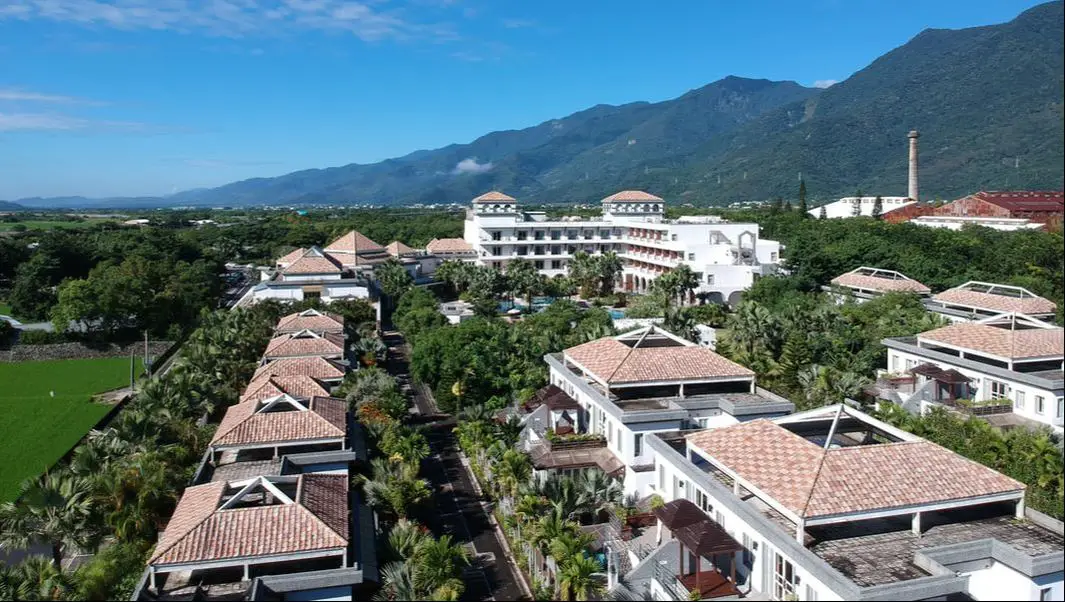
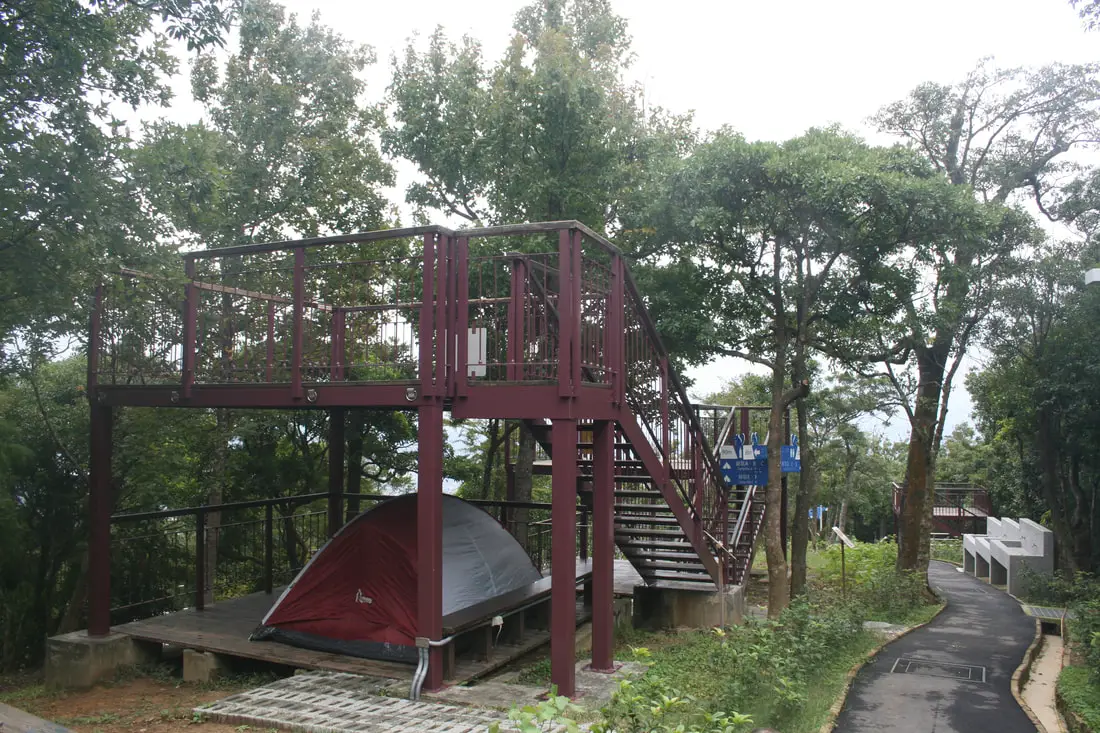
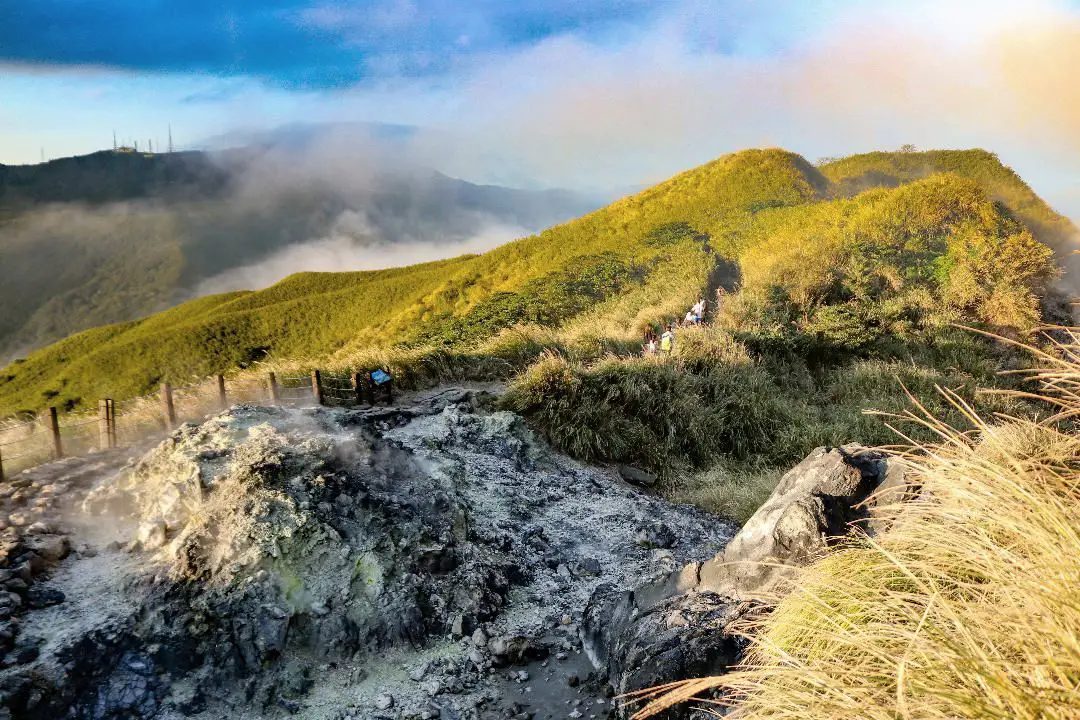
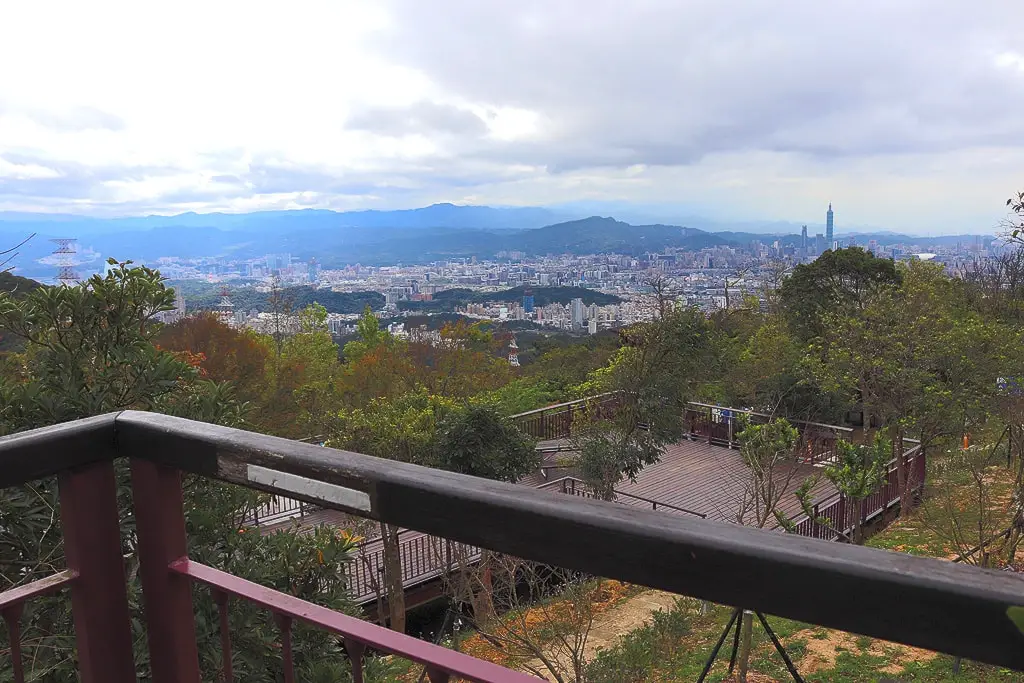
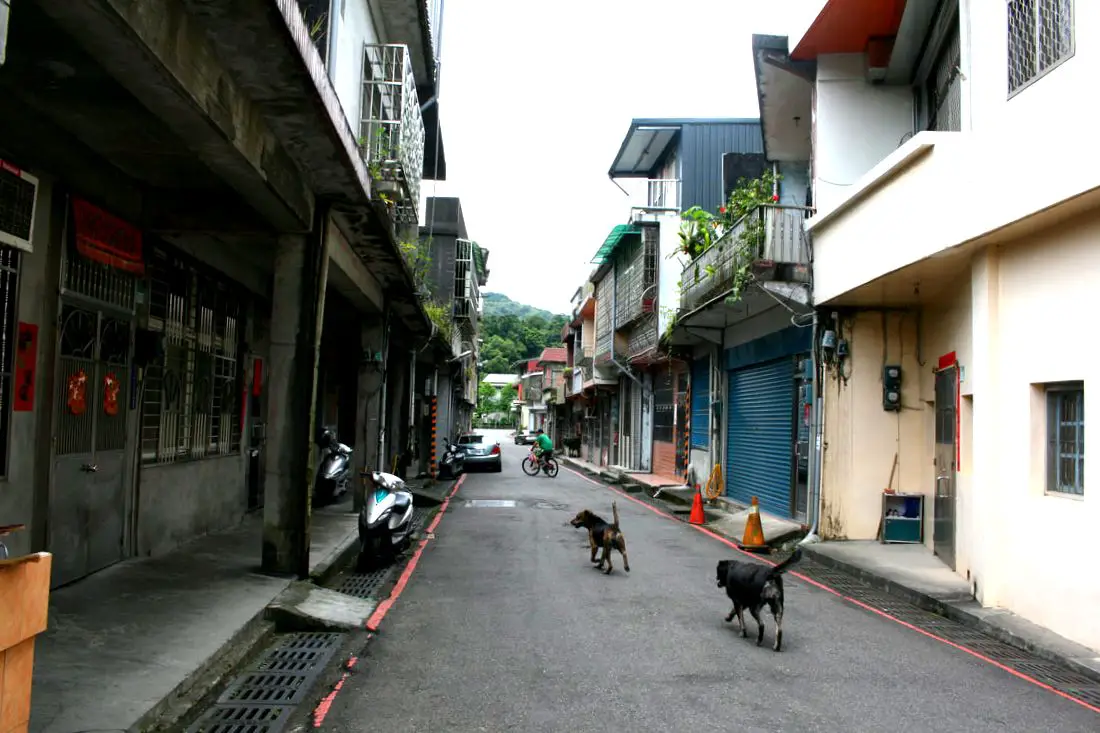
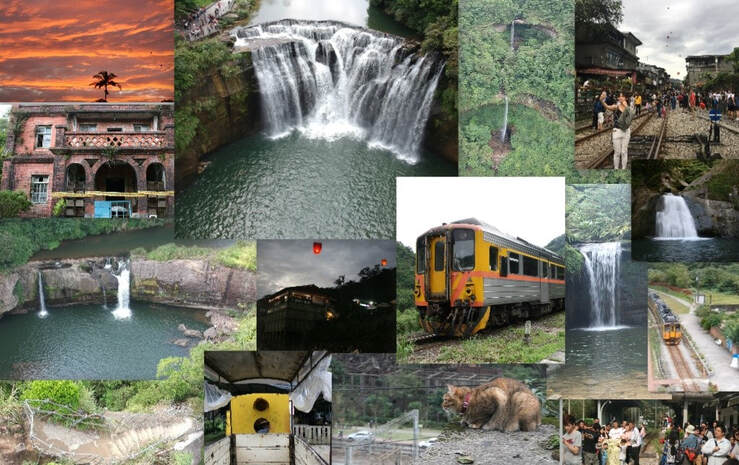
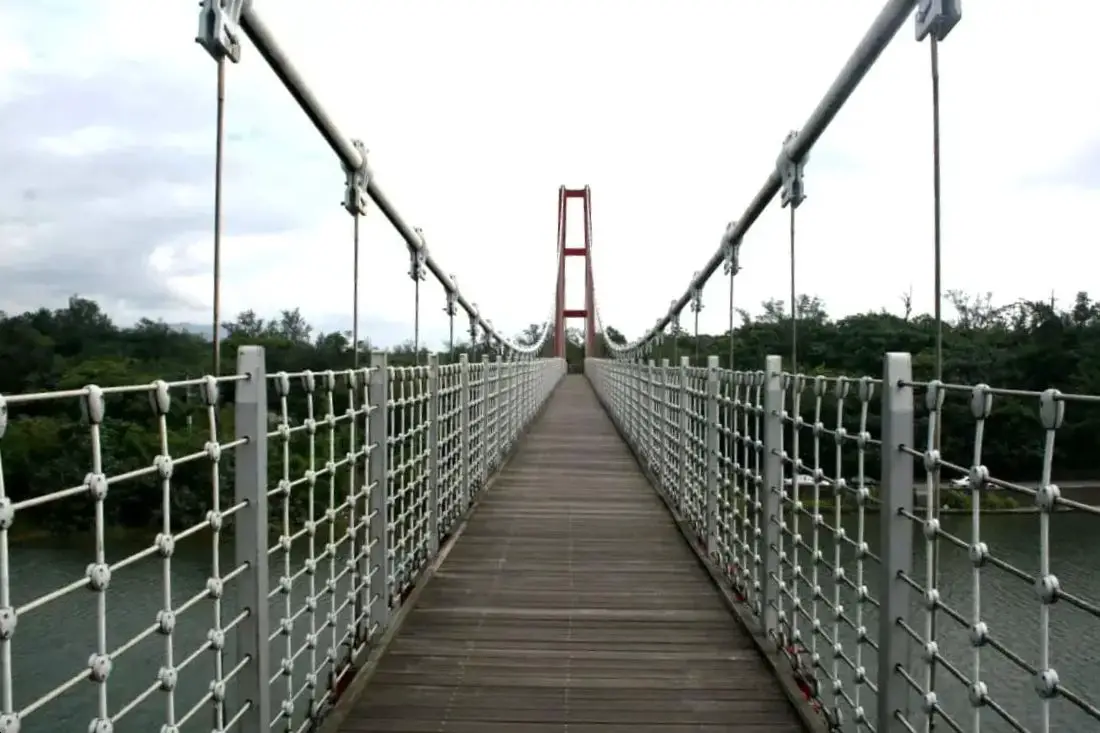
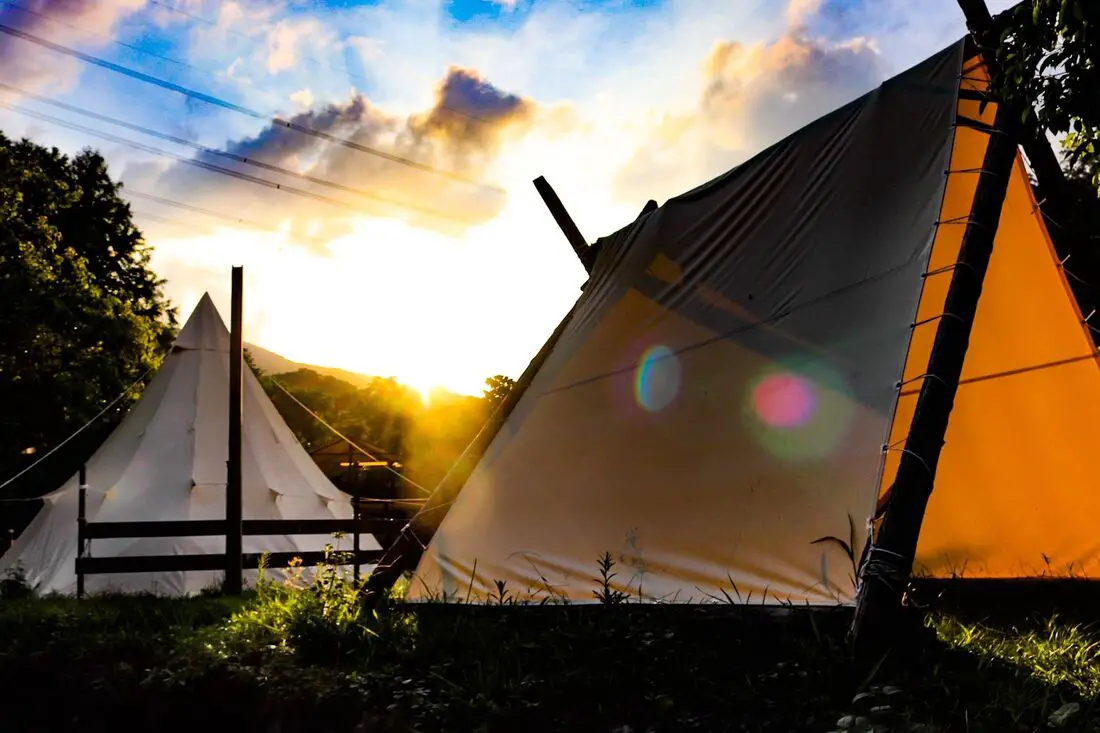
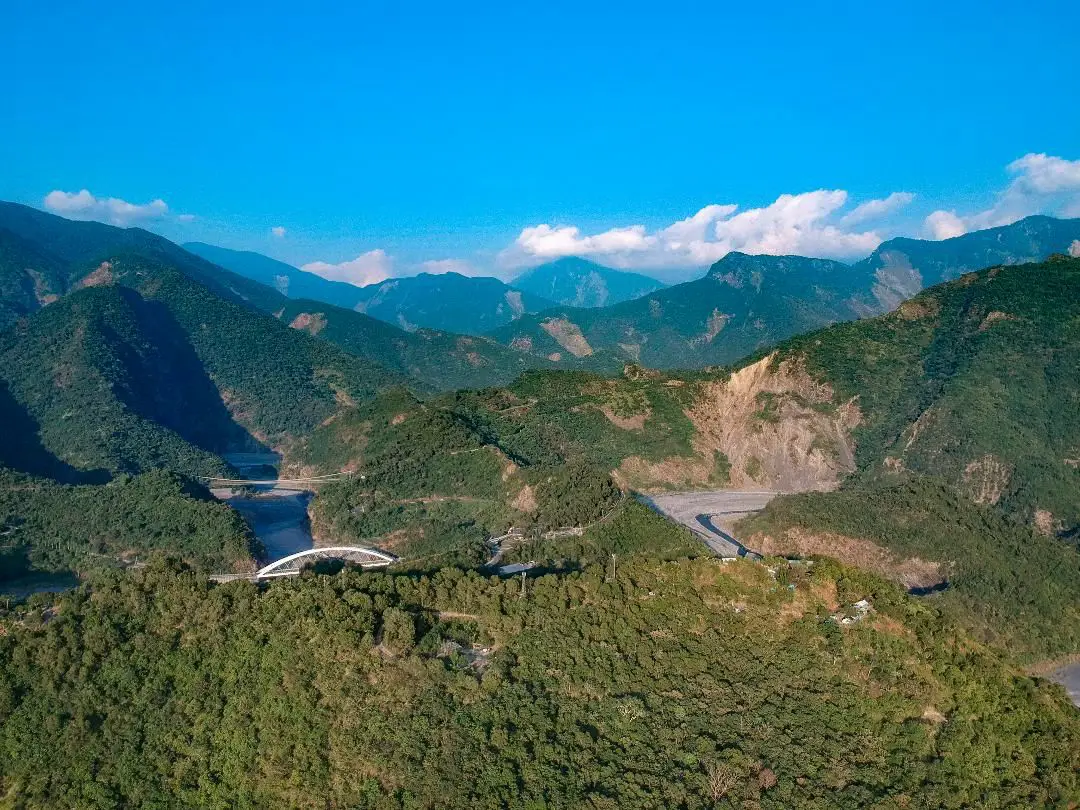
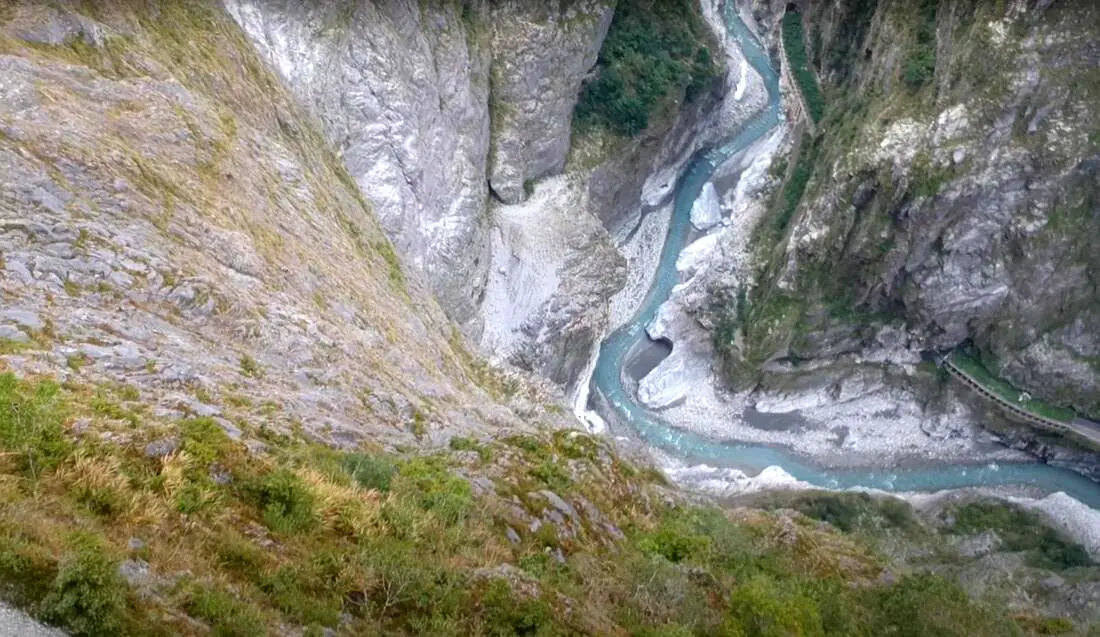
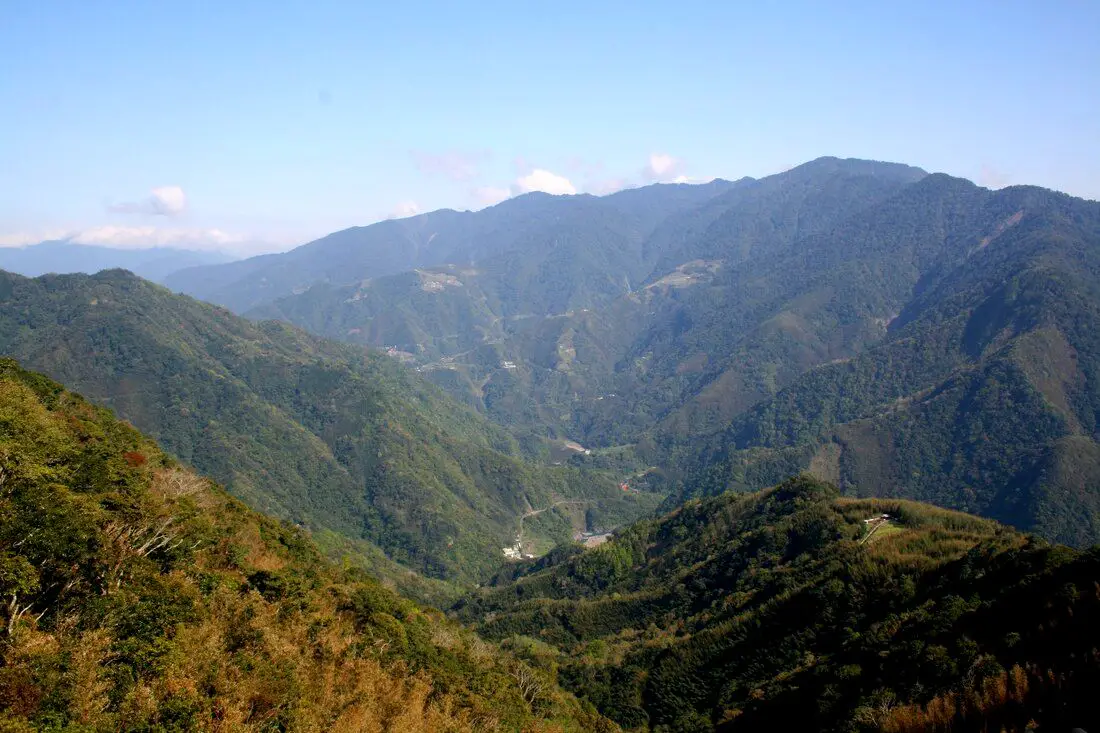
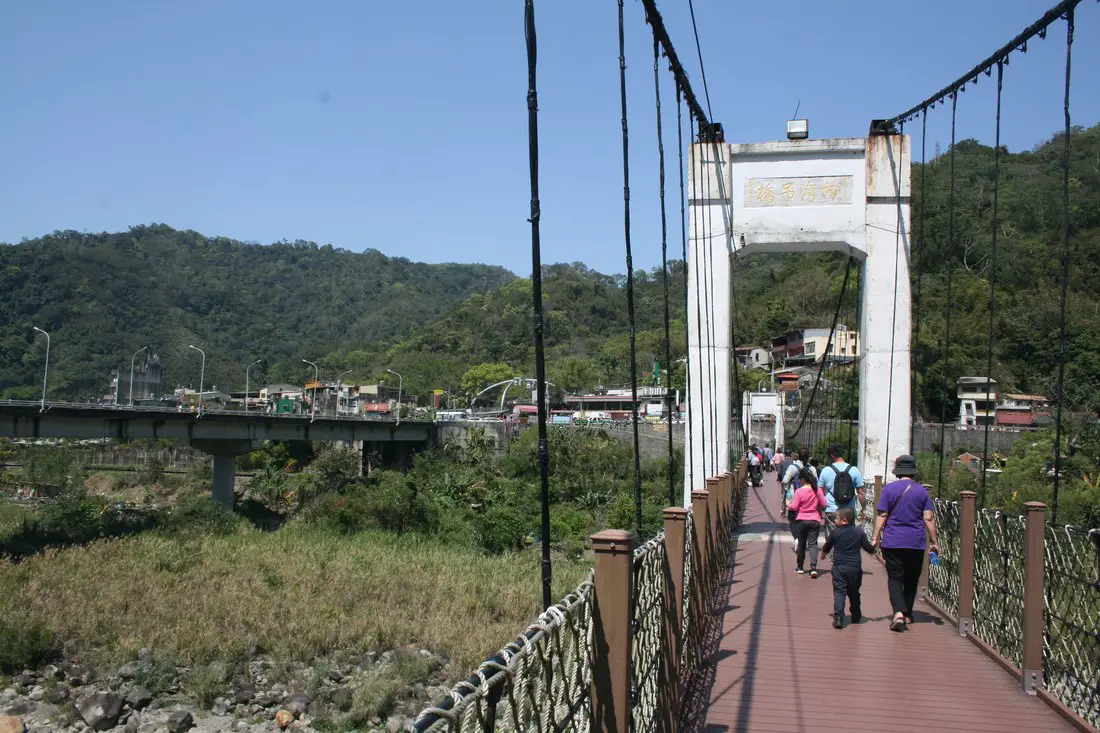

 RSS Feed
RSS Feed
